In 1449, the Commune of Salò on Lake Garda commissioned a polychrome wooden crucifix, the Crocifisso di Salò, for the Duomo there. It is signed “JH”, and this is thought to be the signature of a German master called Johannes.
Three Umbrian crucifixes are documented as the work of a German master called Johannes; these form a coherent group and were almost certainly the work of a second artist who happened to have the same name and nationality as the author of the crucifix at Salò:
-
✴in 1478, the monks of the Abbazia di San Pietro, Perugia commissioned a crucifix for the choir screen of the church from Giovanni Tedesco;
-
✴in 1491, the Commune of Terni commissioned a crucifix (now lost) from him for the chapel of the Palazzo dei Priori; and
-
✴in 1494, “Joanni todisco” executed a crucifix for the Duomo of Santa Maria Argentea, Norcia.
These are described below, along with a number of contemporary works that are attributed to Giovanni Tedesco on stylistic grounds.
Assisi
San Francesco
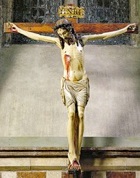
[Crucifix in Santa Maria degli Angeli].
Foligno
Palazzo Vescovile
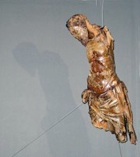
Santa Lucia
Gismondo di Foligno, the father of one of the nuns of Santa Lucia, gave a crucifix to the community in 1522. It now hangs over the high altar of their church.
Norcia
A document in the archives of the Duomo of Santa Maria Argentea dated 1494 records a payment for the crucifix there made to “Joanni todisco”, whose workshop was then at Ascoli Piceno. This crucifix is now on the 1st altar on the left.
Perugia
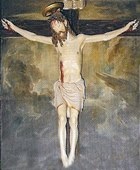
Three similar crucifixes in Perugia are also attributed to Giovanni Tedesco:
-
✴The friars of the Convento di Monteripido commissioned the double-sided Monte Ripido Altarpiece (1503-4) from Perugino to complement a polychrome wooden crucifix (ca. 1460) attributed to Giovanni Tedesco that already decorated the high altar. The crucifix and the altarpiece are now in the Galleria Nazionale.
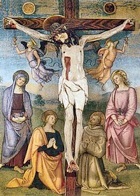
-
✴The Baglioni family commissioned a crucifix for the Cappella Baglioni of Santa Maria dei Servi, which Braccio Baglioni had built in 1471. This crucifix is probably the one that is now on the Altare del Crocifisso in Santa Maria Nuova.
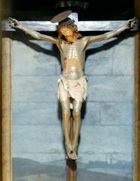
-
✴The “Memoriale di Santa Maria di Monteluce” records that Sister Battista Alfani, the abbess of Santa Maria di Monteluce, used money donated by her brother, Giovanbattista di Alfono Alfani and her nephew Alfanso di Diamante Alfani to commission a large crucifix in ca. 1499, and that this replaced a smaller one in the church. The latter seems to be the one that is now in the choir of Sant’ Erminio, which is attributed to Giovanni Tedesco.
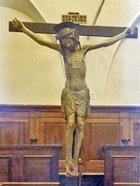
Spello
An inventory made of the works of art in San Girolamo after its suppression in 1798 described a miraculous crucifix on the high altar that was taken in procession in times of adversity. There was a painted backdrop (presumably a panel) that depicted the grieving Virgin and SS Jerome; Francis; and John the Evangelist.
-
✴The inventory attributed the panel to “Onorio Nicolai di Foligno”: Giorgio Vasari had attributed it to Nicolò di Liberatore, l’ Alunno in the early edition of the “Lives of the Artists”. This panel subsequently disappeared.
-
✴The crucifix, which was still on the high altar when it was attributed to Giovanni Tedesco in 1994, was unfortunately stolen in 2004.
Terni
A document of 1491 reveals that Giovanni Tedesco was then living in Terni, and that the Commune gave him a pigeon house in return for a crucifix (now lost) that he made for the chapel of the Palazzo dei Priori.
San Francesco

Santa Maria dell’ Oro
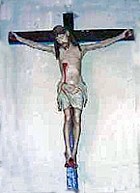
Santa Maria delle Grazie
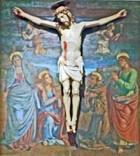
Todi
[A crucifix in the Museo Civico from Montesanto??]

















